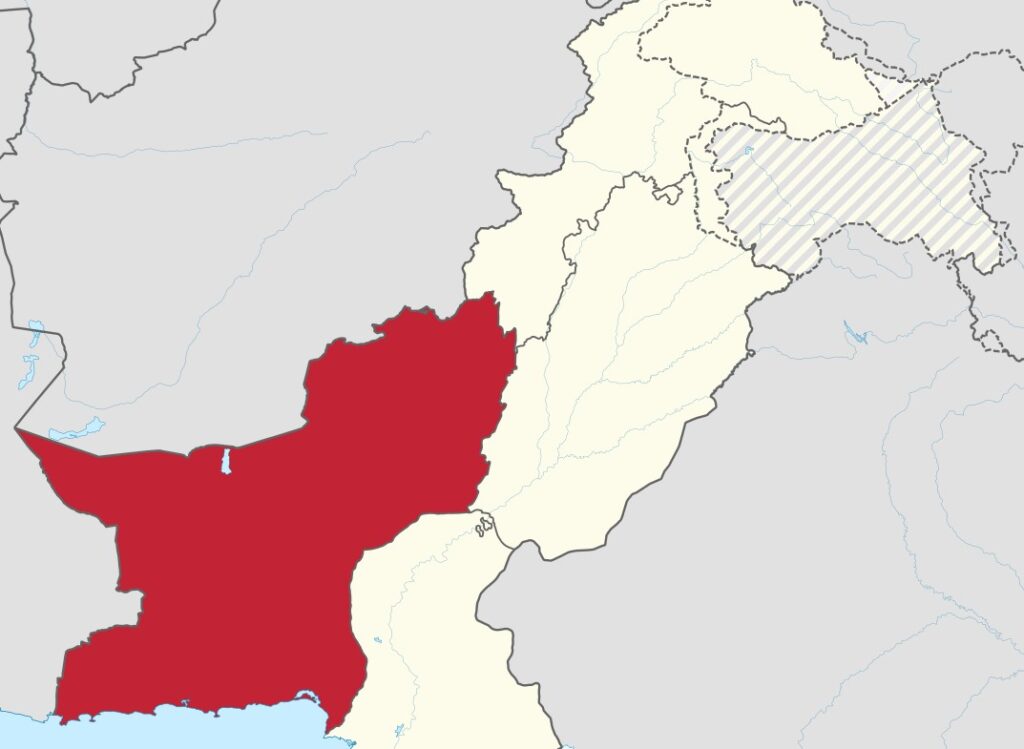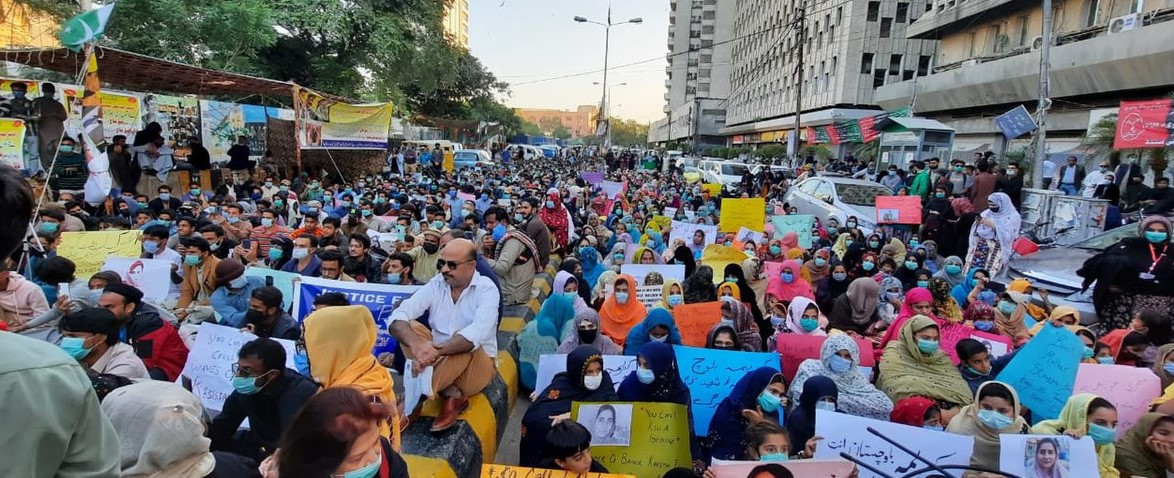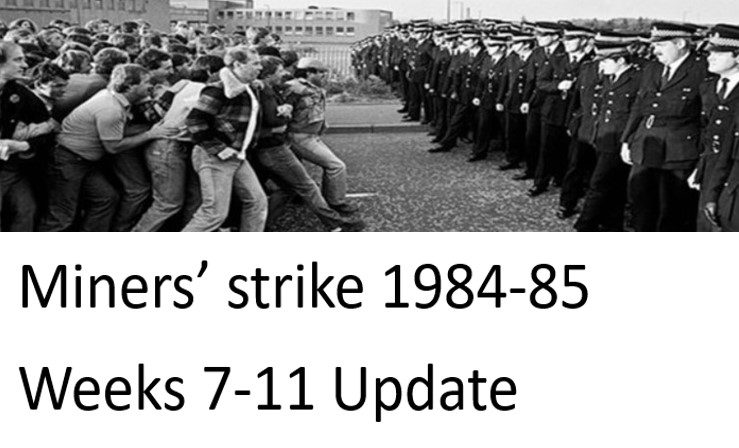By Hassan Jan
Last year, on the midnight of October 29, the Pakistani security forces of the CTD (Counter Terrorism Department) broke into a house in a remote town of Absar, situated at a ten minutes drive from the Turbat City of Pakistan’s restive Balochistan province, ransacking the house and questioning its residents. When they left, they took 22 year old Balaach into custody.
On November 21, the CTD lodged an charge against Balaach, declaring him a member of a Baloch militant separatist outfit, and presented him at the local court. The court granted the CTD a 10-day remand. But on the very next day, at midnight, November 22, Balaach, along with three other Baloch youth, were killed “in a counter-terrorism operation”, or so the CTD claimed. The security forces claimed that Balaach was killed by reckless firing by his own comrades, whose hideout was allegedly identified by him during a search operation.
However, this incident enraged the residents of Turbat and they started a sit-in in the city centre, alongside with the bodies of those killed. Thousands of people assembled at the sit-in, demanding an end to ‘enforced disappearances’ and extra-judicial killings by the security forces. The bodies were eventually laid to rest, but the sit-in turned into a long march to the provincial capital, Quetta.
The march went to numerous towns and cities in Balochistan, where there were mass protest rallies. After their short stay at Quetta, the marchers headed to Islamabad. Along the way, they held mass rallies at Kohlu, Sakhi Sarwar, DG Khan, Taunsa and DI Khan, finally reaching Islamabad, the national capital.
Marchers led by a woman doctor
The police initially forbade them from holding a sit-in in front of National Press Club in Islamabad, but eventually the marchers, led by a woman doctor, Mahrang Baloch, succeeded in holding their protest camp in front of the Islamabad Press Club. Despite all kinds of hurdles, threats and harassment by the police and plain-clothed officers, this sit-in protest against continued till December 23.
In the meantime, hundreds of people, including journalists, political and social activists, parliamentarians and people of all walks of life, visited the protest camp, attracting huge media coverage. The leader of the protest, Dr Baloch, announced the end of protest camp on December 23 and called for a mass rally on December 27 in Quetta. On the day of the rally, hundreds of thousands of people turned out to protest against enforced disappearances.
Meanwhile, mass rallies were being held in every nook and corner of Balochistan, in support of sit-in in Islamabad and against the atrocities of the Pakistani state in Balochistan Province. Hundreds of thousands participated in these rallies, including a large number of women. For over a decade, the state had deliberately given a free hand to the so-called “death squads” in Baloch cities and towns. These death squads are actually bunch of lumpen and criminal elements tasked with sabotaging radical political activism, the abduction of political workers, torture, murder and then dumping their mutilated bodies.
Holding political gatherings risked death
A reign of terror has engulfed the whole province. It amounted to an unofficial curfew every day. To hold political gathering was to risk death. Such was the atmosphere of fear that people hesitated to talk to each other during condolence rituals, lest their talk turned political and an agent of the death squad overheard it. Permission was even required from the authorities to hold marriage processions, in case the security forces confused it with a political rally and opened fire on it.
At the dawn of the twenty-first century, the fourth armed struggle of modern Baloch history started against national oppression and exploitation in Pakistan. Unlike past Baloch armed struggles, which were limited to certain Baloch tribes, this time it has spread to all parts of Balochistan, attracting a large number of educated youth.

To crush this armed upsurge, on the one hand the state started a brutal military operation, and on the other hand, different parts of Balochistan were assigned to various criminal groups to crush the dissent. For example, the Jhalawan belt was handed over to the notorious criminal, Shafique Mengal, and the Sarawan belth was assigned to Siraj Raisani. These groups were notoriously termed “death squads” by the local populace.
These groups had their own torture cells where the abducted Baloch political workers were brutally tortured and their bodies mutilated. In 2014, a mass grave was discovered in Balochistan’s far-flung town of Tootak, containing about two hundred decomposed bodies. Reportedly, these were the bodies of those who were tortured to death in the notorious cells of Shafique Mengal. On the ideological front, in order to eradicate the progressive national liberation movement, religious obscurantism and sectarian terrorist groups were feverishly promoted in the predominantly secular Baloch society.
Baloch Solidarity Committee came into being
Back in May 2020, a similar incident took place in the city of Turbat, when hooligans broke into a house and killed a woman named Malak Naz and injured her daughter. Back then, protests broke out against the incident. During these protests the Baloch Yakjehti Committee (Baloch Solidarity Committee) came into existence, in which young Baloch women played an important role. These protests spread to all major cities and towns of Balochistan.
Ever since, Baloch women have been playing a leading role in the Baloch movement. This is a very progressive step, considering the backward patriarchal nature of society in Balochistan. This was the beginning of political awakening against the brutal national oppression. After years of subjugation, the masses had begun to conquer their fear.
The present movement is basically a continuation of those mentioned above, but on a higher scale. Of course, the immediate demand of the movement revolves around the recovery of missing persons and the dismantlement of the death squads and the CTD, but this political upsurge and the mass campaign is an integral part of the wider movement against national oppression that have continued, with ebbs and flows, since the inception of the Pakistani state.
Unlike the past movements, the peculiarity of the present movement is that it has shaken the whole of Baloch society and engendered sympathy in the wider Pakistani society. Only through a mass political movement can such widespread support and sympathy be attracted.
The Baloch elite, which had on their shoulders the historical task of national integration and national consciousness, have become irrelevant, due to their incompetence and collusion with ruling Pakistani state apparatus. Owing to its peculiar economic foundations, unlike the classical bourgeois national movements, it has failed in its historic task.
The role of Baloch nationalist parliamentarians
The leader of the present movement, Mahrang Baloch, correctly termed this corrupt elite as pseudo-nationalists, who only use nationalist sentiments and rhetoric for their own financial gain. Paradoxically, the historical task of engendering national consciousness is being fulfilled by a mass movement of ordinary Baloch youth, led by Mahrang Baloch, which is again a class question.
But one has to consider the dire consequences of the armed struggle of the last two decades in Balochistan. The role of Baloch nationalist parliamentary parties has been despicable in the last few decades. They came to the heights of power several times on the slogan and program of eliminating national oppression, but instead, they became part of the oppressive state machinery and national oppression increased.
In conditions of appalling economic backwardness, alarming poverty and extreme exploitation, it is natural for the Baloch national question to become violent. The Baloch youth have nothing but contempt for parliamentary democracy as a means of addressing the national question. At the same time, state oppression has astronomically increased to crush the armed rebellion.
In Balochistan, army and paramilitary checkpoints can be found every few kilometers, while in the past there was nothing of the sort. Hooliganism and sabotage by death squads help in this repression. Political activism had come to a standstill.
Despite all armed operations by militant organizations, the writ of the state could not be dented; rather it further intensified. Popular political resistance, which is of utmost importance in repelling state repression, had become a victim of collateral damage in the state’s operations against armed resistance. This fact clearly demonstrates the limitations of armed struggle which can never be a substitute for mass political struggle and at every stage of the present movement the Baloch youth opted for political resistance rather than adventurism, thus manifesting a political consciousness gained by lessons of the past.
Movement against national oppression
Undoubtedly, this movement against national oppression could only attain decisive victory in conjunction with similar mass movements in other provinces of Pakistan, and their integration to Balochistan’s movement. Given the peculiar socio-economic conditions of Balochistan, the oppressive state machinery can’t be defeated solely by the Baloch masses. Rather their movement needs the active support of the oppressed masses of Karachi, Faisalabad, Gujranwala, Lahore, Sialkot and other metropolitan areas of Pakistan.
As the renowned Pashtoon nationalist leader, Wali Khan, once said, the decisive battle against the Pakistan establishment would be fought in the Punjab province. However, this coalescence of movements of the oppressed people could only be achieved through a genuine mass left organization, which is either non-existent or only in an embryonic stage.
In a given society, mass movements erupt only around the basic contradictions of society irrespective of the subjective analysis of some ‘lefts’ on the fringes. The History of past revolutions can be a general guideline for the present day. However, the experiences of the past cannot be mechanically copied and applied in today’s different circumstances.
The biggest failure of the Pakistan left is that they, consciously or unconsciously, regard the Pakistan state as a unit bereft of any kind of national contradictions. Residing in the metropolitan areas of Pakistan, these pseudo lefts anticipate similar mass movements of the proletariat in economically backward Balochistan, reeling with the worst national oppression and exploitation, as those in the industrial cities of the country.
Such a mechanical application of class questions has led them nowhere. Drowned in social media gimmickries, today they are light years away from the current mass upsurge in Balochistan. It needs to be understood, that owing to the belatedness of the development of Pakistani capitalism, this country is a hotchpotch of national and class contradictions. A general movement around a single contradiction across the whole country is ruled out. Even the biggest mass movement of Pakistan’s history, the revolution of 1968-69, couldn’t ignite any significant mass upsurge in Balochistan and Khyber Pakhtoonkhwa.
It is the duty of Marxists to recognize the basic contradiction of a given society, the contradiction which brings the masses into conflict with the state and the ruling classes. By definition, a revolution is a time when all contradictions of society reach a high point. It is the duty of a Marxist leadership to unite all the movements arising around these contradictions and to strike a decisive blow to the system.
[NB: Picture top is of a demonstration in Balochistan in 2020 against the murder, it is believed by the Pakistani state, of Karima Baloch an activist in exile in Canada]



